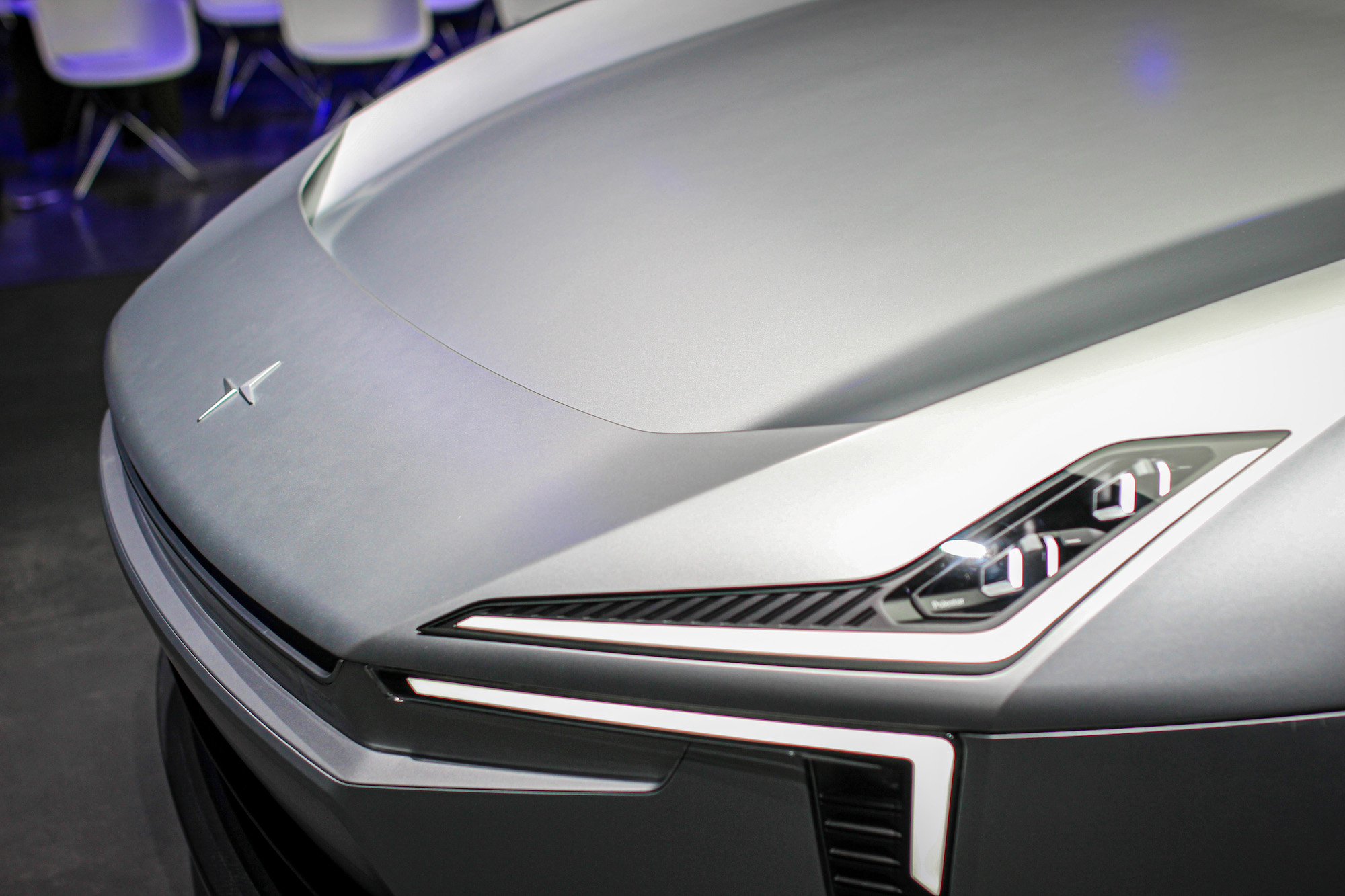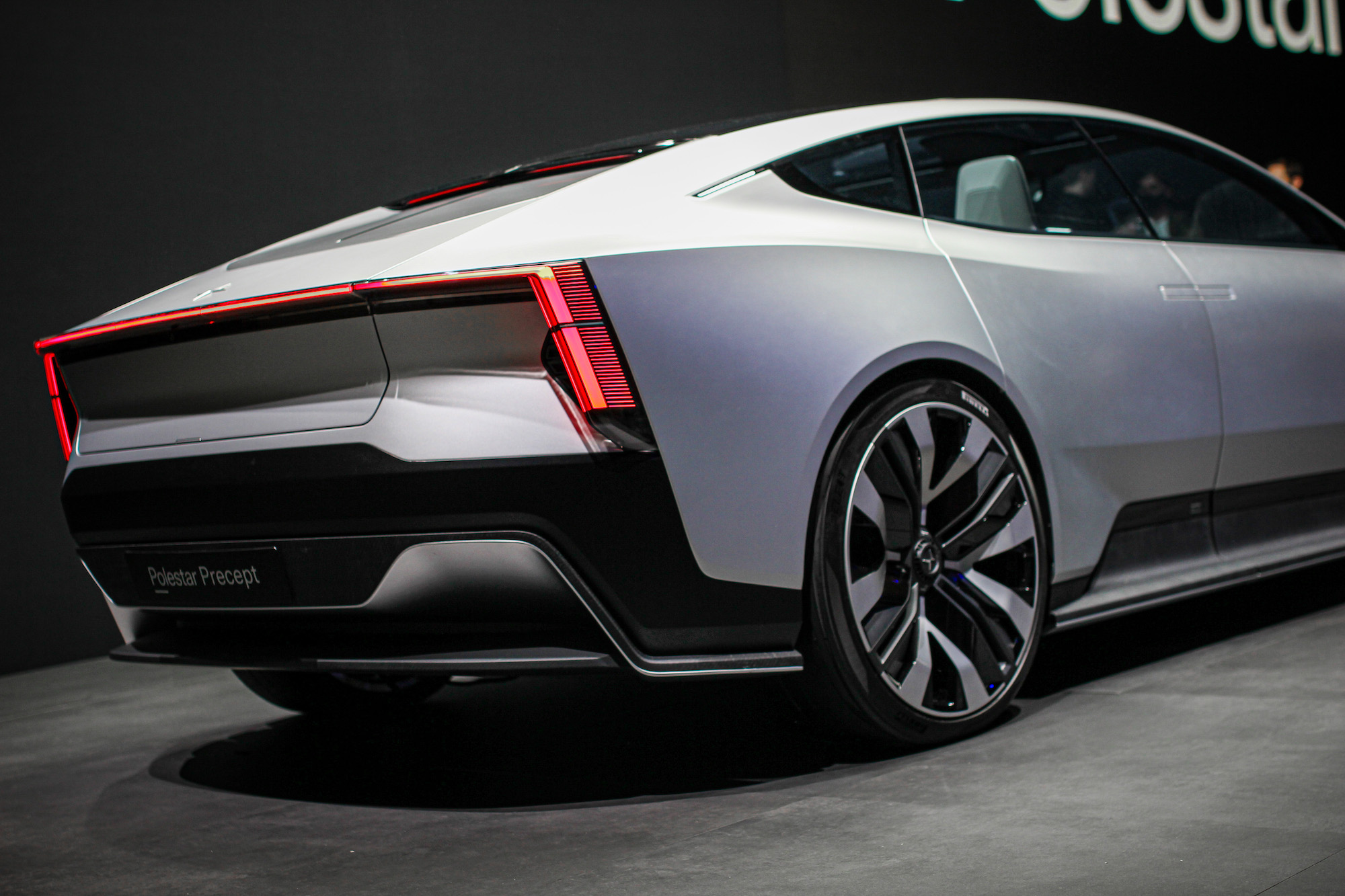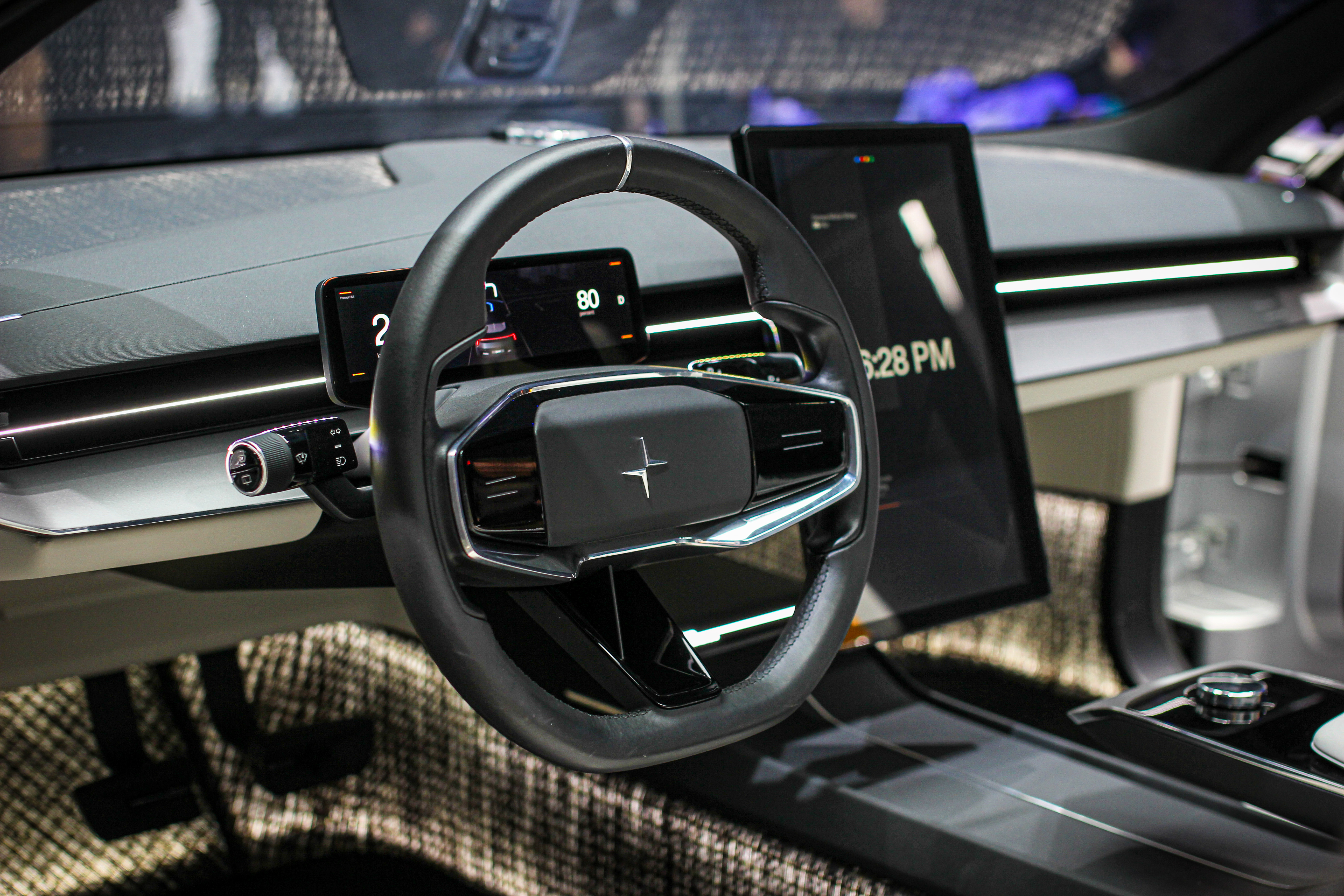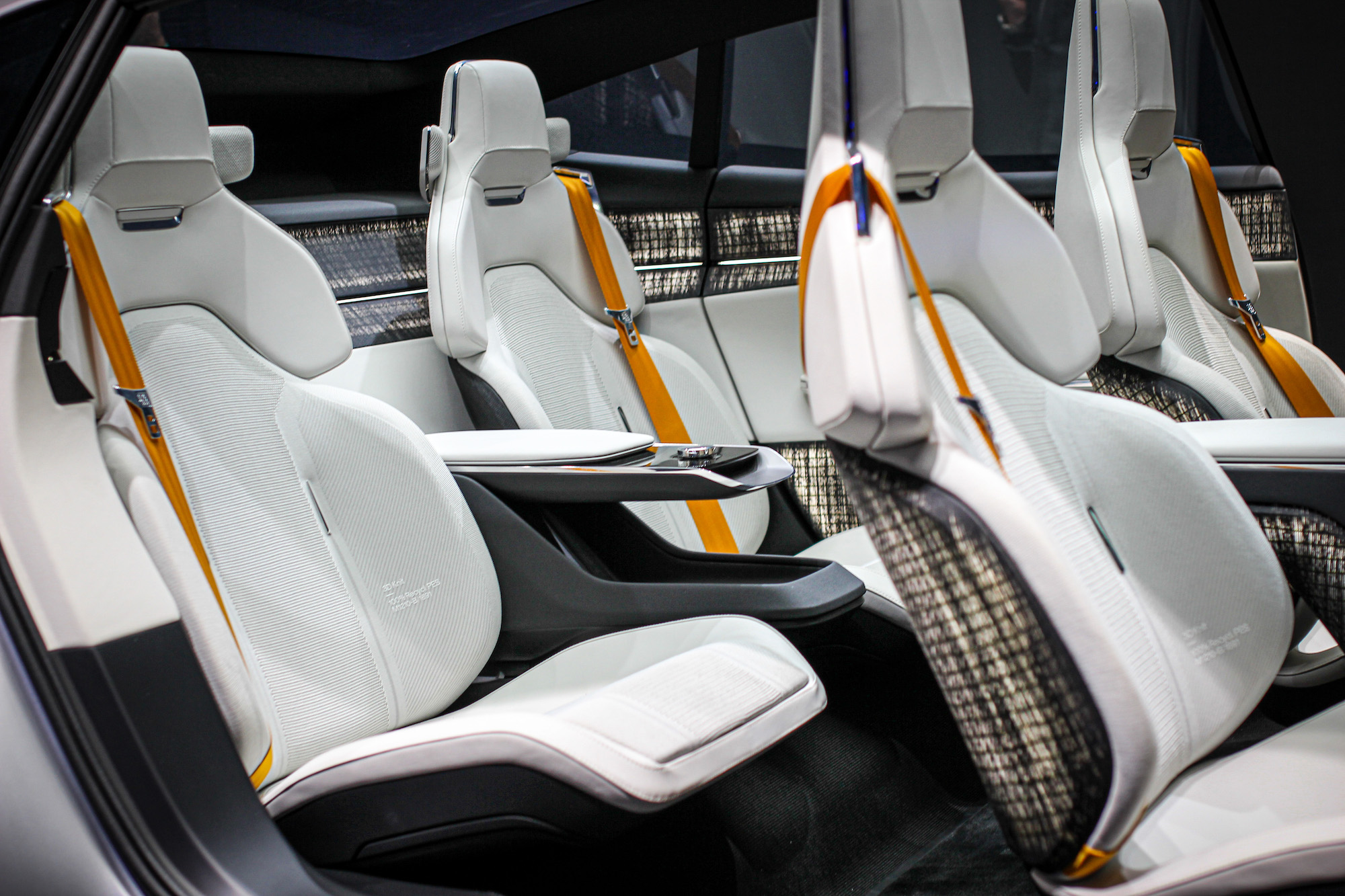Polestar will spend the next three years executing a lofty electric vehicle launch schedule that will culminate with the Precept concept, a “Rosetta Stone” of sorts that provides a physical representation of the company’s future.
Polestar, the former Volvo company that spun out to become its own brand, refers to the concept as its “manifesto.” In other words, the Precept, which will go into production as the Polestar 5, tells consumers and eventual shareholders what the EV automaker intends to become.
The next several years will be spent moving further away from its Volvo roots and closer to its own brand, Greg Hembrough, head of Polestar USA, told TechCrunch in an interview at a company presentation in New York. During the presentation, Polestar CEO Thomas Ingenlath, along with other members of the automaker’s leadership team, laid out a plan to expand to new markets, increase sales volume ten-fold and launch three new cars in the process. This ambitious plan is predicated on the company’s core values of design, sustainability and innovation.
The road so far
In 1996, Polestar was introduced to the world as a racing company that sold and developed performance software for Volvo Cars. Intertwined from the start, the union became official in 2011 when Polestar became a Performance partner, imbuing Volvo vehicles with enhanced sport characteristics. It was fully acquired by Volvo Car Group in 2015. It spun off shortly thereafter as its own brand, birthing its first car, the first-and-only hybrid Polestar 1 in 2017 and full EV Polestar 2 in 2019.
Between the two models, Polestar has sold roughly 29,000 vehicles, with the four-door EV Polestar 2 dominating the bulk of those sales. It’s currently the only Polestar in full swing, as the Polestar 1’s limited production recently concluded and the upcoming Polestar 3 SUV is expected to get underway sometime in 2022.
Future design
From the jump, the Precept is meant to convey as much of the Polestar tenets as can be visually conveyed, the most prominent of which is luxury and performance. It’s also key to Polestar’s brand identity, distinguishing itself from its sibling brand and becoming something unique.
“I believe that if people take a look at the Polestar 1 and Polestar 2, they continue to see a little bit of the DNA from one of our sibling companies,” Hembrough told TechCrunch. “The Precept’s intent was to not only give you an indication of our future design language is going to be, but also a clear indicator of elements you’ll see from a design perspective and sustainability perspective. These things are far greater now than just a wish list, these are things that will actually be brought into production.”
With this in mind, the business end of the Precept starts to tell a story. The Volvo family resemblance begins to fade, in favor of a more distinct, signature look. For instance, the distinct “Thor’s Hammer” headlights from the sibling brand are now “dual blades,” and appear to split the original design in half physically, if not also symbolically.
The “shark nose” facia has further intricacies, such as the absence of a vestigial grille for engine cooling, replaced by the “SmartZone” sensor suite. This houses a collection of radar emitters and cameras intended for enhanced advanced driver assistance system features, effectively switching to a “seeing” face rather than a “breathing” one.
There’s also a front aero foil, a wing incorporated into the front that improves airflow. “Of course, it looks awesome as well,” Ingenlath added enthusiastically at the event.
Innovation
When it comes to tech, Polestar has a full plate. There’s the fun stuff like its ambitions for its vehicles to have a certain level of automated highway piloting, but it’s moot if the cars fail to outperform the competition.
Underneath the surface of the Precept is an aluminum architecture indicative of the sporty underpinnings the Polestar 5 will have. The grand tourer will have an electrical system based off of the one that will be incorporated into the Polestar 3 and will have Nvidia-powered computing integrated. Its motor will be the “P10,” a 450 kilowatt unit in development that the company is targeting to be one of the most powerful ones out there, producing roughly 603 horsepower. This is married to a 800 volt battery pack that can switch to 400 to match the charging infrastructure, and will also support bi-directional charging.
With so much to focus on, Hembrough says concentrating on the user experience keeps Polestar on the right course. “It’s one of the things we began building very early with the Polestar 2, being the first company with an Android Automotive operating system that includes embedded Google services. Over-the-air software updates are rolled out to customer vehicles monthly, and there’s a surprise and delight with everything from having a web browser to games to a video player.
“We begin to take it very quickly to the next level with the Polestar 3 and as indicated in the Precept, things like ocular tracking is a convenience but also a safety opportunity as well. UX will continue to be part of that innovation, but we will never stray away from safety,” he added.
Sustainability
A great deal of emphasis was placed on the issue of sustainability, with a focus on reducing carbon impact, if not neutralizing it from production entirely.
Polestar has declared its intention to produce a fully carbon neutral vehicle by 2030. It’s not a self pat on the back, either, it’s a conversation customers are actively engaged in, too.
“If you look back, five or ten years ago, I think that’s one of the last things consumers would be talking about, but the world has changed so dramatically, those are all things consumers are very conscious about and asking about,” Hembrough said.
The declaration of its “Polestar 0” project has galvanized a sense of urgency in the company, and the methods planned vary in scope. To start, there are new and innovative materials at play in the interior of the Precept, such as carbon-fiber-like bio-composite components derived from flax. The seats are a weave of recycled PES plastics. It’s a fabric that’s already in use in the fashion and footwear world, and one of the ways Polestar looks to differentiate itself with the old ways of automaking. “Those things aren’t just taglines, they’re at our core,” Hembrough said.
Outside of innovative materials, Polestar will employ carbon capture tech to achieve its goals, as well as increasing transparency within its supply chain level and insisting on improved supplier practices.
Beyond 2025
Even with these bold endeavors laid out, it just scratches the surface of Polestar’s intentions.
The automaker is shooting to produce a fully carbon neutral car by 2030, but what happens after that? Plotting a course that far into the future is truly sailing into the unknown, and even Polestar admits that time will tell if these efforts will be enough to make a difference. It does have one other goal — to become a fully climate neutral company by 2040 — that will dictate many, if not all, of its choices over the next 18 years.





